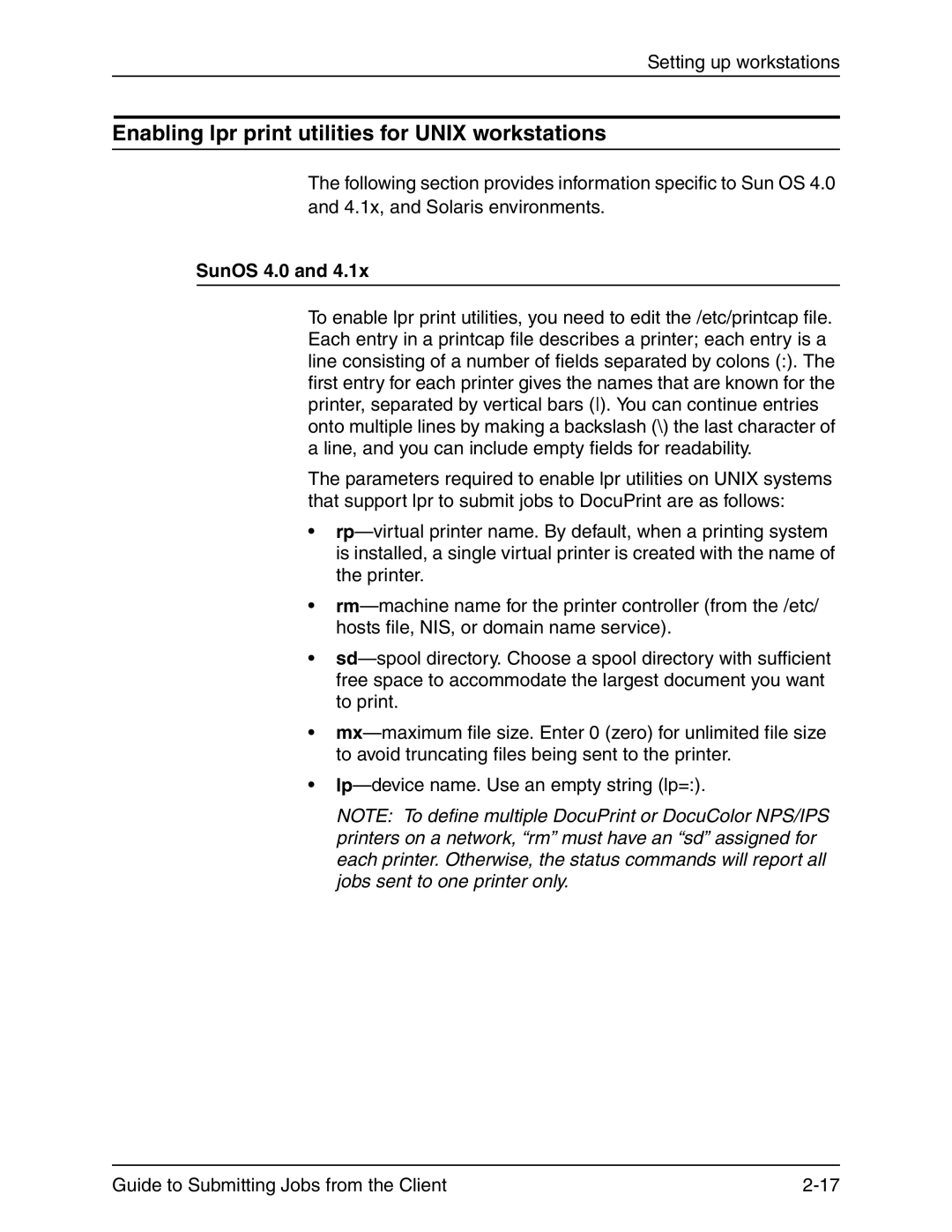
Setting up workstations
Enabling lpr print utilities for UNIX workstations
The following section provides information specific to Sun OS 4.0 and 4.1x, and Solaris environments.
SunOS 4.0 and 4.1x
To enable lpr print utilities, you need to edit the /etc/printcap file. Each entry in a printcap file describes a printer; each entry is a line consisting of a number of fields separated by colons (:). The first entry for each printer gives the names that are known for the printer, separated by vertical bars (). You can continue entries onto multiple lines by making a backslash (\) the last character of a line, and you can include empty fields for readability.
The parameters required to enable lpr utilities on UNIX systems that support lpr to submit jobs to DocuPrint are as follows:
•
•
•
•
•
NOTE: To define multiple DocuPrint or DocuColor NPS/IPS printers on a network, “rm” must have an “sd” assigned for each printer. Otherwise, the status commands will report all jobs sent to one printer only.
Guide to Submitting Jobs from the Client |
